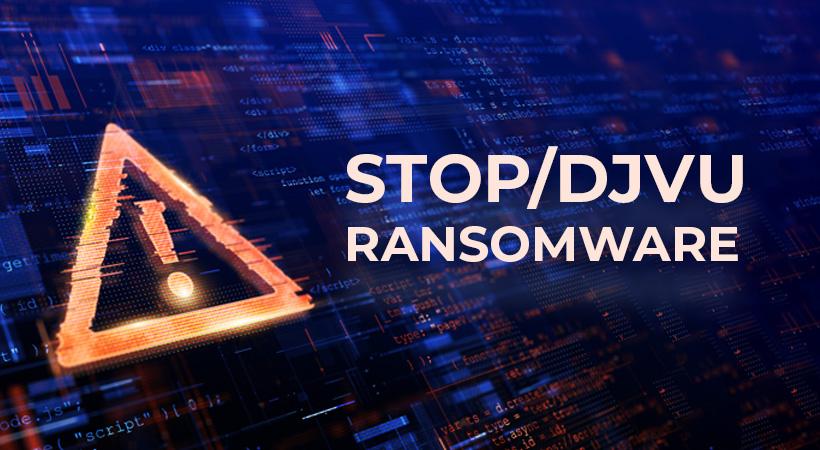Cybereason’s cybersecurity researchers have exposed the latest variant of the notorious DJVU ransomware, termed Xaro, employing cracked software as a distribution vector. This variant capitalizes on cracked software, specifically leveraging disguised archive files sourced from dubious platforms, masquerading as legitimate freeware providers.
Understanding the Threat
Infiltration Tactics
Cracked Software Deception Xaro disguises itself within seemingly harmless archive files, portraying as a benign installer for CutePDF, a widely used PDF writing software. Unsuspecting users are enticed into downloading these archives from dubious sites offering freeware.
PrivateLoader Activation Upon opening the deceptive archive, the supposed CutePDF installer triggers PrivateLoader, a pay-per-install malware downloader. PrivateLoader establishes a connection with a command-and-control server, initiating the download of a range of malware families, including information stealers like RedLine Stealer and Vidar, alongside potent loaders such as SmokeLoader and Nymaim.
“Shotgun Approach” Strategy This attack deploys multiple malware strains simultaneously, ensuring success even if one payload gets blocked by conventional security measures. Diverse malware families, each with unique capabilities, highlight the sophistication of this threat landscape.
Xaro’s Strategy and Impact
Dual-Threat Approach Xaro not only encrypts files within the infected system but also deploys Vidar infostealer, maximizing impact by combining file encryption for extortion and information theft for potential double extortion scenarios.
Ransom Note and Demands Victims face a ransom demand of $980 for the private key and decryptor tool, halved to $490 if contact is made within 72 hours. This urgency adds pressure to the extortion attempt.
Risks of Untrusted Freeware
Cautionary Measures Downloading freeware from untrusted sources poses significant risks. Threat actors are increasingly using freeware as a covert delivery method for malicious code. Users and enterprises need stringent cybersecurity measures to combat evolving ransomware strategies.
Preventive Measures and Removal Guide
Preventive Measures
- Software from Trusted Sources: Obtain software from legitimate sources to avoid compromised versions.
- Regular Software Updates: Keep software updated to patch vulnerabilities.
- Robust Security Software: Use reputable antivirus/antimalware tools and firewalls.
- Backup Data: Maintain regular backups to mitigate data loss in case of an attack.
- Educate Users: Train users on recognizing and avoiding suspicious links or downloads.
Removal Guide
- Quarantine Infected System: Isolate the infected system from the network by turning of Wi-Fi or unplugging ethernet cables to prevent further spread.
- Use Antivirus/Malware Tools: Run a deep scan with reputable antivirus/antimalware software.
- Remove Malicious Files: Follow software instructions to quarantine and remove detected threats.
- Restore from Backup: If available, restore the files which have been affected by the ransomware from a secure backup. This would be applicable if you have been backing up your important files regularly to an external hard drive or online cloud storage.
Staying vigilant and implementing robust cybersecurity practices is paramount to mitigating the risks posed by Xaro and similar evolving threats.
Conclusion
Conclusion
The emergence of the Xaro ransomware, a variant of the notorious DJVU (STOP) ransomware, underscores the evolving landscape of cyber threats. Xaro leverages cracked software as a distribution vector, targeting unsuspecting users through seemingly benign archive files masquerading as legitimate freeware. Its deployment of PrivateLoader to deliver multiple malware strains highlights the sophistication of this ransomware campaign.
The dual-threat approach of Xaro, combining file encryption for extortion and deploying the Vidar infostealer for potential double extortion, intensifies the impact on victims. The accompanying ransom note and demands inject urgency into the extortion attempt.
This threat serves as a poignant reminder of the risks associated with downloading freeware from untrusted sources. It emphasizes the necessity for users and enterprises alike to adopt stringent cybersecurity measures, including obtaining software from trusted sources, implementing robust security tools, maintaining regular backups, and educating users on recognizing and avoiding suspicious downloads.
A combination of vigilance, proactive security protocols, and user education stands as the strongest defense against the evolving tactics of ransomware threats like Xaro. Timely updates, cautious browsing habits, and a multi-layered security approach are imperative in safeguarding against such pervasive and complex cyber threats.





